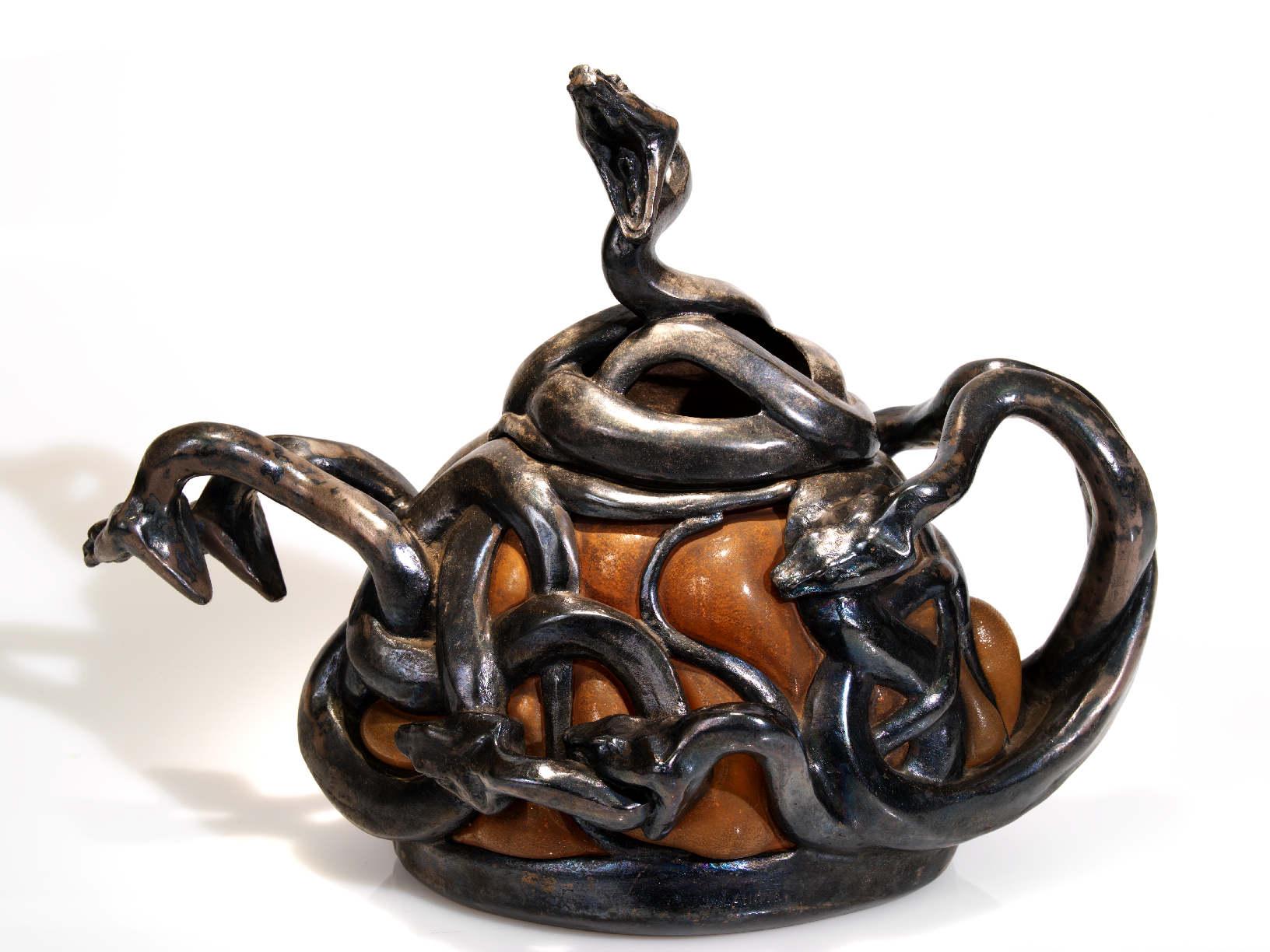
- France, c. 1897–1900
- Silver and glass
- Inv. 1162
- Signed: LALIQUE
‘Serpents’ sugar bowl
In this sugar bowl, an extremely unusual object decorated with serpents, a motif commonly found in his work, Lalique uses the very old technique of blowing glass into hollowed-out metal structures. In the 19th century, the master glass makers of Venice achieved great success with this same technique. In chronological terms, this work dates from the artist’s early period, when he dedicated himself to jewellery after training as a goldsmith.
In this work, which is a genuine example of ‘goldsmithing in glass’, Lalique applies the blown-glass technique into a hollowed-out structure made of patinated cast silver. Due to the difficulty inherent in this method, he created relatively few such pieces. The structure of this piece is thus made up of an entangled group of serpents in patinated silver whose bodies frame the amber-coloured blown glass. The handle of the sugar bowl is also a coiled serpent, a motif that is repeated on the body of the piece, from which two reptiles emerge as if ready to attack. Another serpent with a raised body in the centre serves as a handle for the lid.
Acquired by Calouste Gulbenkian from René Lalique, May 1923.
H. 22 cm; W. 29 cm
Leite 2008
Maria Fernanda Passos Leite, René Lalique at the Calouste Gulbenkian Museum. Lisbon/Milan: Calouste Gulbenkian Museum/Skira, 2008, p. 102, cat. 52.
Lisbon 2011
Calouste Gulbenkian Museum. Lisbon: Calouste Gulbenkian Museum, 2011, p. 198, cat. 177.